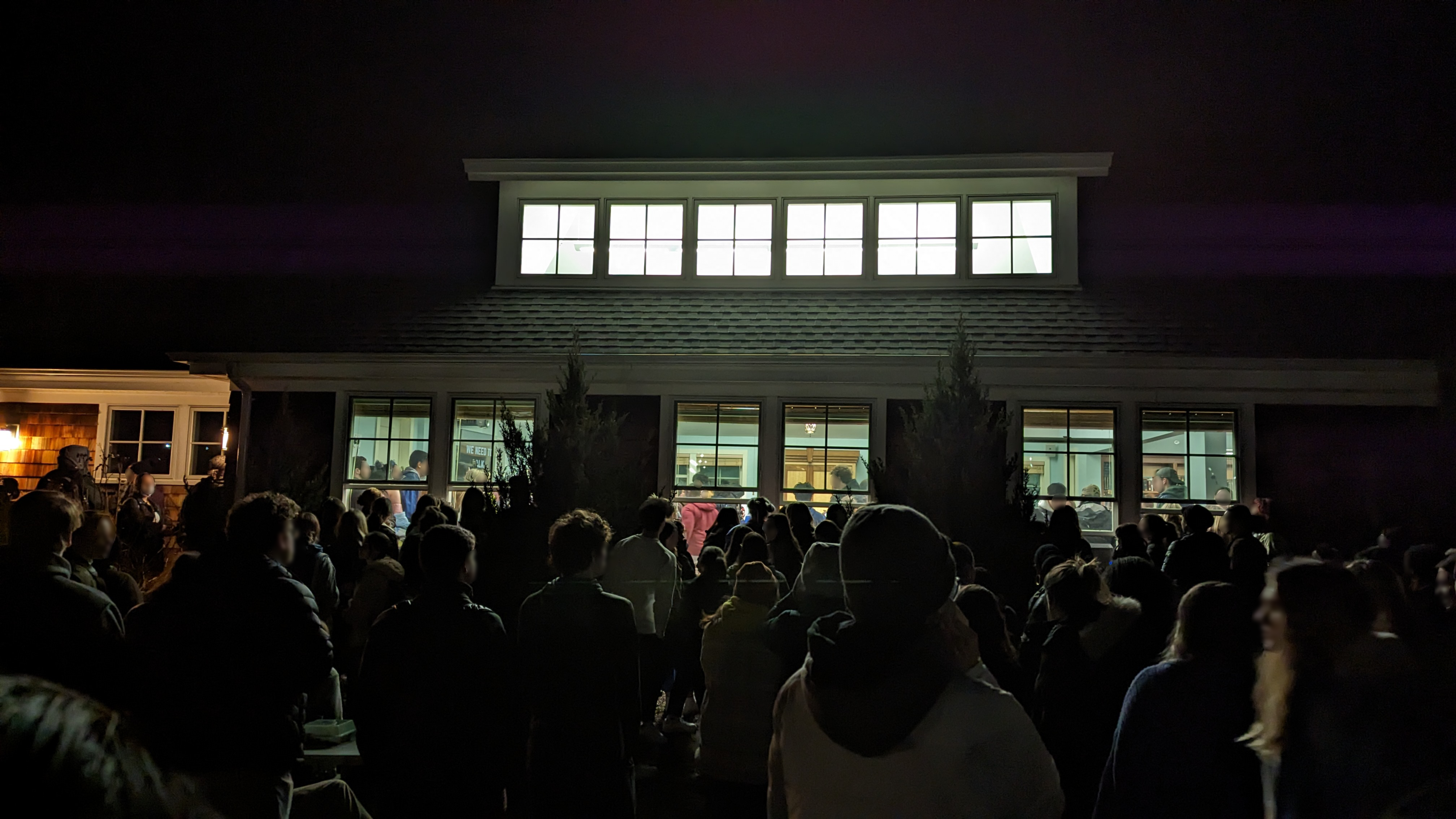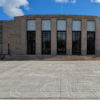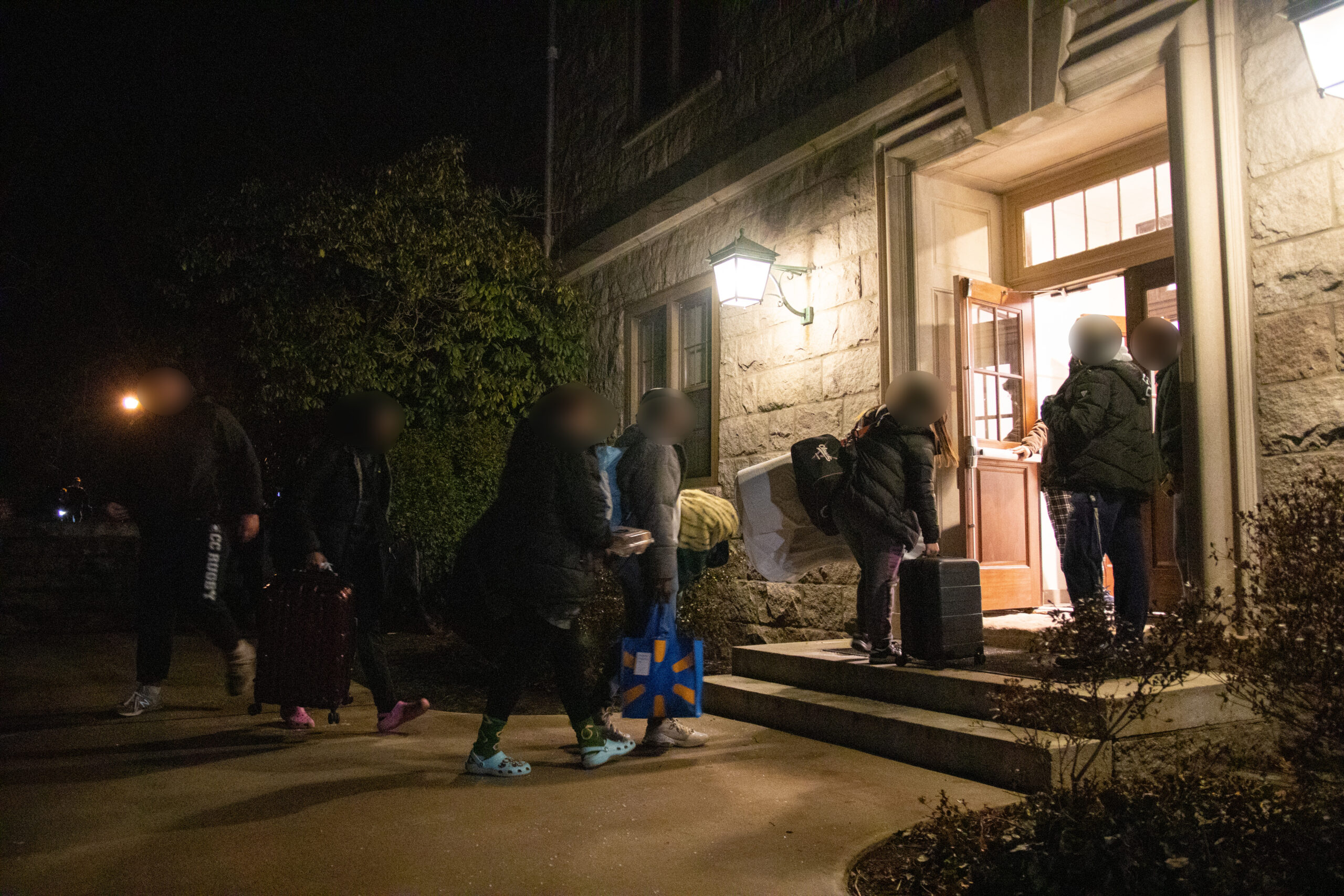When we think about the land on which Connecticut College is located, a few images may come to mind: the trees that have just started to bloom with the arrival of spring, the forests and trails of the Arboretum, the water surrounding Mamacoke Island and the sunsets that turn the whole sky orange and pink. An image that may not immediately arise is the land as a home for indigenous nations. As part of our ConnCourse #BlackLivesMatter, we have studied modern social movements through several critical frameworks, one of which is settler colonialism, a concept inextricably linked to the experiences of indigenous peoples throughout U.S. history.
Settler colonialism is a specific form of imperialism, and current U.S. policies related to indigenous people should be understood in this context. The concept is based on Western ideals of progress and its “intrinsic goodness,” which subsequently justifies the destruction of cultures and people that are viewed as backwards and uncivilized, as was the case with Native Americans. However, the genocidal project of settler colonialism is not the mainstream narrative of European arrival in the New World. Instead, the myth of the “doctrine of the discovery” persists. This idea purports that Europeans had a right and even a duty to settle the land that became the United States. Central to the logic of settler colonialism is a project of erasure, maintaining access to Native American lands, and keeping Native Americans out of view, silenced and factionalized. The fact that we don’t think of ourselves as occupiers of Pequot land points to the success of the structure of settler colonialism. Settler colonialism is a part of hegemonic systems of power that operate as common-sense logic within U.S. society. For example, at the foreign policy level, the U.S. invasion of Iraq in 2003 was justified under the guise of the United States’ duty to spread democratic and Western ideals. Therefore, global manifestations of settler colonialism include U.S. military intervention around the globe and U.S. support for the settler-colonial state of Israel.
On a local scale, there are four Native American nations that inhabit New London County: the Mohegans, the Niantics, the Mashantucket Pequots and the Eastern Pequots. Most archaeological and linguistic evidence reveals that these nations were indigenous to the area before Europeans arrived, and the New London County region is thought to have had the most concentrated population of Native Americans in Connecticut. The land and resources of these indigenous nations are inseparable from Conn students’ extracurriculars and social life. When the rowing team trains on the Thames, they are on what was formerly known as the Pequot River. Similarly, when groups of students gamble or go out to clubs at Foxwoods or Mohegan Sun Casinos, they are on the reservations of the Mashantucket Pequot and Mohegan nations, respectively. These serve as just a few examples of how we may not realize the ways in which the Conn community is complicit in the process of settler colonialism, as we occupy Native land.
At the “Run Toward Fear” talk on April 24, one of the panelists, Amer Ahmed, recognized that the event was being held on Pequot land, exemplifying a process of acknowledgement that is beginning to spread throughout institutions of higher education. Bates, Bowdoin and Colby Colleges now offer full tuition scholarships to Native American students, although debates remain about whether Native American students have access to the admission process in the first place. Student protests at Amherst College prompted the Board of Trustees to remove the school’s mascot, Lord Jeffrey, who distributed blankets laced with smallpox to Native Americans. Various student demands at Columbia University to recognize the Lenape people, who once lived on the land where the campus is now located and were subjected to destructive removal processes, have resulted in the installation of a plaque on campus.
What has Connecticut College done to acknowledge this land as belonging to Indigenous peoples? In November 2016, Native American Heritage Month was observed by the College with three events: a performance by an intertribal powwow drum group Fort River, a concert by Grammy-winning Native American flutist Rober Mirabal and an event titled, “Ninniwonk: We Belong to the Land,” featuring Deborah Spears Moorehead, a descendant of the Massasoit people from the Seaconke Pokanoket Wampagnoag Nation. The College also sponsored transportation to the Pow Wow festival at the Mashantucket Pequot Museum in Mashantucket, Connecticut. Outside of the month of November, the school has hosted several teach-ins about the Dakota Access Pipeline.
But clearly, there is more to be done. Plaques and free tuition won’t right violences of the past, but they are considered by some to be an important step toward acknowledgement. However, central to the justice tradition of Native Americans is the restoration of their land relationship. We must remember that projects of acknowledgement, therefore, only go so far. In the future, Connecticut College should not only acknowledge its occupation of Pequot land but work to reconcile the violent structure of settler colonialism that this institution bears complicity in. What this will look like exactly requires a radical imaginary of the future of a liberated world, led by Native people themselves.








